《管理会计 英文版 第3版》
| 作者 | 罗纳德 W.希尔顿 编者 |
|---|---|
| 出版 | 北京:机械工业出版社 |
| 参考页数 | 1028 |
| 出版时间 | 1998(求助前请核对) 目录预览 |
| ISBN号 | 7111064240 — 求助条款 |
| PDF编号 | 89786398(仅供预览,未存储实际文件) |
| 求助格式 | 扫描PDF(若分多册发行,每次仅能受理1册) |
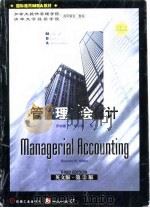
CHAPTER1
Glossary G-1
Indexes I-1
Contents in BriefPreface xixPhoto Credits xxviiiPART1
ContentsPreface xixPhoto Credits xxviiiPART1
FUNDAMENTALS AND COST-ACCUMULATION SYSTEMS1
FUNDAMENTALS AND COST-ACCUMULATION SYSTEMS1
Indexes I-1
Glossary G-1
PART2
PART2
CHAPTER2
MANAGERIAL ACCOUNTING:AN OVERVIEW3
PART3
CHAPTER 1 MANAGERIAL ACCOUNTING:AN OVERVIEW3
PART3
CHAPTER3
CHAPTER4
ORGANIZATIONS AND THEIR GOALS4
THE MANAGEMENT PROCESS4
PART4
PART4
Decision making 4/Planning 5/Directing operational activities 5/Controlling5
THE ROLE OF MANAGERIAL ACCOUNTING5
CHAPTER5
Professional services and sales budget 409/Production budget:Construction of orthotic devices 410/Direct-material budget 411/Direct-professional-labor budget 414/Indirect-professional-labor budget 414/CHAPTER6
CHAPTER8
CHAPTER9
Objectives of managerial accounting activity 5/Managerial versusfinancial accounting 8/Managerial accounting in different types oforganizations9
ROLE OF THE MANAGERIAL ACCOUNTANT10
Line and staff positions10
CHAPTER11
MAJOR THEMES IN MANAGERIAL ACCOUNTING12
CHAPTER12
CHAPTER13
CHAPTER14
COST ANALYSIS AND PRICING DECISIONS15
CHAPTER15
CHAPTER16
CHAPTER17
888/Fixed versus variable costs 889/Dual cost allocation 891/AllocateCHAPTER 18
Information and incentives 12/Behavioral issues 12/Costs and benefits 12/Evolution and adaptation in managerial accounting 13/Cost managementsystems 17/A systems perspective 17/Accounting and computers18
CHAPTER 19
STRATEGIC COST MANAGEMENT AND THE VALUE CHAIN19
CHAPTER20
MANAGERIAL ACCOUNTING ASACAREER22
Professional organizations 22/Professional certification 22/Professional ethics 22/Chapter summary 24/Key terms 24/Reviewquestions 25/Exercises 25/Problems26
BASIC COST TERMS AND CONCEPTS31
CHAPTER 2 BASIC COST TERMS AND CONCEPTS31
COST CLASSIFICATIONS:DIFFERENT COSTS FOR DIFFERENTPURPOSES32
Fixed and variable costs 32/Identifying cost drivers 36/Direct and indi-rect costs 36/Controllable and uncontrollable costs 38/Manufacturingcosts 39/Production costs in service industry firms and nonprofit organi-zations 41/Nonmanufacturing costs 42/Prod43
COSTS ON FINANCIAL STATEMENTS44
COST FLOWS IN A MANUFACTURING COMPANY45
Income statement 44/Balance sheet45
ECONOMIC CHARACTERISTICS OF COSTS47
Opportunity costs 47/Sunk costs 49/Differential costs 51/Marginalcosts and average costs52
COSTS AND BENEFITS OF INFORMATION53
Chapter summary 53/Review problems on cost classifications 54/Solutions to review problems 55/Key terms 56/Review questions 56/Exercises 57/Problems 60/Cases69
CHAPTER 3 JOB-ORDER COSTING SYSTEMS73
JOB-ORDER COSTING SYSTEMS73
Product costing in nonmanufacturing firms74
PRODUCT AND SERVICE COSTING74
FLOW OF COSTS IN MANUFACTURING FIRMS75
TYPES OF PRODUCT-COSTING SYSTEMS76
Job-order costing systems 76/Process-costing systems 77/Summary ofalternative product-costing systems77
ACCUMULATING COSTS INAJOB-ORDER COSTING SYSTEM78
Job-cost sheet 78/Direct-material costs 78/Direct-labor costs 80/Manufacturing-overhead costs 81/Summary of event sequence in job-order costing82
ILLUSTRATION OF JOB-ORDER COSTING82
Purchase of material 82/Use of direct material 84/Use of indirect ma-terial 84/Use of direct labor 84/Use of indirect labor 86/Incurrenceof manufacturing-overhead costs 86/Application of manufacturing over-head 86/Summary of overhead accounting 87/Sellin93
FURTHER ASPECTS OF OVERHEAD APPLICATION93
TWO-STAGE COST ALLOCATION98
Accuracy versus timeliness of information:A cost-benefit issue 93/Choosing the cost driver for overhead application 97/Departmental over-head rates98
Activity-based costing:An introduction99
PROJECT COSTING:JOB-ORDER COSTING IN NONMANUFACTURINGORGANIZATIONS101
CHANGING TECHNOLOGY IN MANUFACTURING OPERATIONS102
Electronic data interchange(EDI)103/Use of bar codes 103/Chaptersummary 104/Key terms105
APPENDIX:DIFFERENT OVERHEAD RATES UNDER PLANTWIDE,DEPRTMENTAL,AND ACTIVITY-BASED COSTING SYSTEMS106
Review questions 109/Exercises 109/Problems 115/Cases129
PROCESS COSTING AND HYBRID PRODUCT-COSTING SYSTEMS135
CHAPTER 4 PROCESS COSTING AND HYBRID PRODUCT-COSTING SYSTEMS135
COMPARISON OF JOB-ORDER COSTING AND PROCESS COSTING136
Differences between job-order and process costing138
EQUIVALENT UNITS:A KEY CONCEPT139
ILLUSTRATION OF PROCESS COSTING141
Basic data for illustration 142/Weighted-average method 143/FIFOmethod 147/Just-in-Time(JIT)Inventory Methods147
OTHER ISSUES IN PROCESS COSTING147
HYBRID PRODUCT-COSTING SYSTEMS150
Operation costing for batch manufacturing processes150
ADAPTING PRODUCT-COSTING SYSTEMS TO TECHNOLOGICALCHANGE154
Chapter summary 155/Key terms156
APPENDIXA:FIFO METHOD OF PROCESS COSTING157
APPENDIX B:PROCESS COSTING IN SEQUENTIAL PRODUCTIONDEPARTMENTS163
Weighted-average method 165/FIFO method 165/Summary oftransferred-in costs 170/Review questions 170/Exercises 171/Problems 176/Cases186
ACTIVITY-BASED COSTING AND COSTMANAGEMENT SYSTEMS189
CHAPTER 5 ACTIVITY-BASED COSTING AND COSTMANAGEMENT SYSTEMS189
Production process 190/Plant layout 192/Traditional,volume-basedproduct-costing system 193/Trouble in Phoenix 194/Activity-based cost-ing system 195/Interpreting the ABC product costs 201/The punch line190
AEROTECH CORPORATION:ATALE OF TWO CITIES190
202/Why traditional,volume-based systems distort product costs204
ACTIVITy-BASED COSTING:SOME KEY ISSUES206
Cost drivers 207/Homogeneous activity cost pools 209/Transaction cost-ing 209/Storyboarding 210/Multidisciplinary ABC project teams 210/Direct versus indirect costs 210/When is a new product-costing systemneeded?211
COST MANAGEMENT SYSTEMS212
Non-value-added costs 213/Identifying non-value-added costs in thePhoenix plant214
ACTIVITY-BASED COSTING AND MANAGEMENT IN THE SERVICEINDUSTRY216
ACTIVITY-BASED MANAGEMENT216
Chapter summary 218/Review problem on cost drivers and product-costdistortion 219/Solution to review problem 220/Key terms 220/Reviewquestions 221/Exercises 221 /Problems 228/Cases242
ACTIVITY-BASED MANAGEMENT AND THENEW MANUFACTURING ENVIRONMENT249
CHAPTER 6 ACTIVITY-BASED MANAGEMENT AND THE NEWMANUFACTURING ENVIRONMENT249
AEROTECH'S BAKERSFIELD PLANT:ADVANCED MANUFACTURINGTECHNOLOGY250
Just-in-time inventory and production management 250/Flexible manufac-turing system 253/Plant layout at Aerotech's Bakersfield facility 254/Cost management system in Bakersfield256
TWO-DIMENSIONAL ABC AND ACTIVITY-BASED MANAGEMENT256
Using ABM to eliminate non-value-added activities and costs 261/Achieving cost reduction263
TARGET COSTING,KAIZEN COSTING,AND CONTINUOUSIMPROVEMENT264
Target costing 264 / Kaizen costing 265 / Toyota:Target costing and kaizencosting in action 266/Benchmarking 267/Re-engineering 268/Theory ofconstraints269
KEYS TO SUCCESSFULLY IMPLEMENTING ABC AND ABM269
COST FLOWS IN A JIT SETTING271
OTHER COSTMANAGEMENT ISSUES IN THE NEW MANUFACTURINGENVIRONMENT273
Chapter summary 274/Key terms 275 / Review questions 275/Exercises 276/Problems 279/Cases289
PLANNING AND CONTROLSYSTEMS293
PLANNING AND CONTROLSYSTEMS293
CHAPTER 7 COST BEHAVIOR AND ESTIMATION295
CHAPTER 7 COST BEHAVIOR AND ESTIMATION295
COST BEHAVIOR PATTERNS296
Variable costs 297/Step-variable costs 298/Fixed costs 299 / Step-fixedcosts 301/Semivariable cost 301/Curvilinear cost 302/Using cost be-havior patterns to predict costs 304/Engineered,committed,and discre-tionary costs 305/Shifting cost structure in th307
COST ESTIMATION308
Account-classification method 308/Visual-fit method 309/High-lowmethod 311 / Least-squares regression method 311/Multiple regression308
WORK MEASUREMENT318
Chapter summary 320/Review problems on cost behavior and estimation318
315/Data collection problems 315/Engineering method of cost estima-tion 316/Effect of learning on cost behavior 316/Costs and benefits ofinformation318
321/Solutions to review problems 321/Key terms322
APPENDIX:FINDING THE LEAST-SQUARES REGRESSION ESTIMATES322
Key terms:Appendix 325/REview questions 325/Exercises 327/Problems 332/Cases342
CHAPTER 8 COST-VOLUME-PROFIT ANALYSIS349
COST-VOLUME-PROFIT ANALYSIS349
Projected expenses and revenue350
ILLUSTRATION OF COST-VOLUME-PROFIT ANALYSIS350
THE BREAK-EVEN POINT351
Contribution-margin approach 351/Equation approach352
Interpreting the CVP graph 355/Alternative format for the CVP graph353
GRAPHING COST-VOLUME-PROFIT REIATIONSHIPS353
357/Profit-volume graph357
TARGET NET PROFIT357
Contribution-margin approach 358/Equation approach 359/Graphicalapproach359
APPLYING CVP ANALYSIS359
Safety margin 359/Changes in fixed expenses 360/Changes in the unitcontribution margin 360/Predicting profit given expected volume 361/Interdependent changes in key variables 363/CVP information in pub-lished annual reports364
CVP ANALYSIS WITH MULTIPLE PRODUCTS364
ASSUMPTIONS UNDERLYING CVP ANALYSIS366
Role of computerized planning models and electronic spreadsheets367
CVP RELATIONSHIPS AND THE INCOME STATEMENT368
Traditional income statement 368/Contribution income statement368
368/Comparison of traditional and contribution income statements368
COST STRUCTURE AND OPERATING LEVERAGE370
Operating leverage 371/Cost structure and operating leverage:a cost-benefit issue373
CVP ANALYSIS,ACTIVITY-BASED COSTING,AND ADVANCEDMANUFACTURING SYSTEMS374
A move toward JIT and flexible manufacturing 375/Chapter summary 377/Review problem on cost-volume-profit analysis374
377/Solution to review problem 378/Key terms378
APPENDIX:EFFECT OF INCOME TAXES379
Key terms:Appendix 382/Review questions 382/Exercises 383/Problems 386/Cases396
CHAPTER 9 BUDGETING:PROFIT PLANNING AND CONTROLSYSTEMS403
BUDGETING:PROFIT PLANNING ANDCONTROL SYSTEMS403
PURPOSES OF BUDGETING SYSTEMS404
THE MASTER BUDGET:A PLANNING TOOL405
TYPES OF BUDGETS405
Sales of services or goods 405/Operational budgets 407/Budgeted finan-cial statements 408/Nonprofit organizations408
AN ILLUSTRATION OF THE MASTER BUDGET408
Overhead budget 414/Selling and administrative expense budget 416/Cash receipts budget 417/Cash disbursements budget 417/Summarycash budget 420/Budgeted income statement 421/Budgeted balancesheet 421/Using the master budget for planning424
BUDGET ADMINISTRATION424
ASSUMPTIONS AND PREDICTIONS:THE UNDERPINNINGS OF THEMASTER BUDGET425
Financial planning models426
ZERO-BASE BUDGETING427
INTERNATIONAL ASPECTS OF BUDGETING427
BUDGETING PRODUCT LIFE-CYCLE COSTS428
BEHAVIORAL IMPACT OF BUDGETS429
Budgetary slack:Padding the budget 430/Participative budgeting 431/Management by objectives 432/Ethical issues in budgeting 432/Chapter summary 433/Key terms434
APPENDIX:INVENTORY MANAGEMENT435
Economic order quantity 435/Timing of orders437
JIT INVENTORY MANAGEMENT:IMPLICATIONS FOR EOQ439
Key terms:Appendix 440/Review questions 440/Exercises 441/Problems 441/Cases462
CHAPTER 1O STANDARD COSTING AND PERFORMANCEMEASURES FOR THE NEW MANUFACTURINGENVIRONMENT469
CHAPTER 1OSTANDARD COSTING AND PERFORMANCEMEASURES FOR THE NEW MANUFACTURINGENVIRONMENT469
CONTROLLING COSTS470
Management by exception470
SETTING STANDARDS471
Participation in setting standards 471/Perfection versus practical stan-dards:A behavioral issue472
USE OF STANDARDS BY NONMANUFACTURING ORGANIZATIONS472
COST VARIANCE ANALYSIS474
Direct-material standards 474/Direct-labor standards 474/Standardcosts given actual output 475/Analysis of cost variances 475/Direct-material variances 475/Direct-labor variances 478/Multiple types of di-rect material or direct labor 479/Allowing for spo479
SIGNIFICANCE OF COST VARIANCES480
A statistical approach482
BEHAVIORAL IMPACT OF STANDARD COSTING483
CONTROLLABILITY OF VARIANCES484
Interaction among variances485
STANDARD COSTS AND PRODUCT COSTING486
ADVANTAGES OF STANDARD COSTING488
CHANGING ROLE OF STANDARD-COSTING SYSTEMS IN THE NEWMANUFACTURING ENVIRONMENT489
Criticisms of standard costing in the new manufacturing environment 490/Adapting standard-costing systems491
OPERATIONAL CONTROL MEASURES IN THE NEWMANUFACTURING ENVIRONMENT492
Gain-sharing plans497
Chapter summary 498/Review problems on standard costing and operationalperformance measures 499/Solutions to review problems 500/Key terms497
THE BALANCED SCORECARD497
502/Review questions 502/Exercises 503/Problems 507/Cases520
FLEXIBLE BUDGETS AND CONTROL OFOVERHEAD COSTS525
CHAPTER 11 FLEXIBLE BUDGETS AND CONTROL OFOVERHEAD COSTS525
OVERHEAD BUDGETS526
Flexible budgets 526/Advantages of flexible budgets 526/The activitymeasure527
FLEXIBLE OVERHEAD BUDGET ILLUSTRATED529
OVERHEAD APPLICATION IN A STANDARD-COSTING SYSTEM530
Criteria for choosing the activity measure531
CHOICE OF ACTIVITY MEASURE531
OVERHEAD COST VARIANCES533
Variable overhead 534/Fixed overhead 537/Four-way,three-way,andtwo-way variance analysis540
STANDARD COSTS AND PRODUCT COSTING542
OVERHEAD COST PERFORMANCE REPORT542
ACTIVITY-BASED FLEXIBLE BUDGET543
MEASURING AND REPORTING QUALITY COSTS546
Chapter summary 549/Review problem on overhead variances 550/Solution to review problem 550/Key terms551
APPENDIX:SALES VARIANCES552
ISO 9000 STANDARDS568
Key terms:Appendix 553/Review questions 553/Exercises 554/Problems 558/Cases574
SECTION 1 RESPONSIBILITY ACCOUNTING ANDSEGMENTED REPORTING579
RESPONSIBILITY ACCOUNTING AND INCOMEREPORTING579
CHAPTER 12 RESPONSIBILITY ACCOUNTING AND INCOMEREPORTING579
Responsibility centers580
ILLUSTRATION OF RESPONSIBILITY ACCOUNTING580
PERFORMANCE REPORTS583
Cost-plus pricing 751/Absorption-cost pricing formulas 753/Variable-costBUDGETS,VARIANCE ANALYSIS,AND RESPONSIBILITYACCOUNTING586
Cost allocation 586/Activity-based responsibility accounting588
BEHAVIORAL EFFECTS OF RESPONSIBILITY ACCOUNTING589
Information versus blame 589/Controllability 590/Motivating desiredbehavior590
SEGMENTED REPORTING591
Segments versus segment managers 593/Key features of segmented report-ing 593/Customer profitability analysis and activity-based costing593
SECTION 2 VARIABLE AND ABSORPTIONCOSTING594
ILLUSTRATION OF VARIABLE AND ABSORPTION COSTING595
Absorption-costing income statements 595/Variable-costing income state-ments 596/Reconciling income under absorption and variable costing595
597/Cost-volume-profit analysis 599/Evaluation of absorption and vari-able costing 600/Chapter summary 601/Review problem on responsibil-ity accounting 602/Solution to review problem 602/Key terms603
APPENDIX:EFFECT OF THE VOLUME VARIANCE UNDERABSORPTION AND VARIABLE COSTING604
Review questions 607/Exercises 608/Problems 612/Cases623
CHAPTER 13 INVESTMENT CENTERS AND TRANSFERPRICING629
INVESTMENT CENTERS AND TRANSFERPRICING629
DELEGATION OF DECISION MAKING630
Obtaining goal congruence:A behavioral challenge 630/Adaptation ofmanagement control systems630
MEASURING PERFORMANCE IN INVESTMENT CENTERS631
Return on investment 632/Residual income634
MEASURING INCOME AND INVESTED CAPITAL637
Invested capital 637/Measuring investment-center income 640/Inflation:Historical-cost versus current-value accounting 641/Measuring incomeand invested capital:Summary642
OTHER ISSUES IN SEGMENT PERFORMANCE EVALUATION642
Alternatives to ROI and residual income 642/Importance of nonfinancialinformation 643/Measuring performance in nonprofit organizations644
TRANSFER PRICING644
Goal congruence 644/General-transfer-pricing rule 645/Transfers basedon the external market price 648/Negotiated transfer prices 650/Cost-based transfer prices 650/Standard versus actual costs 651/Undermining divisional autonomy 651/An international pers653
BEHAVIORAL ISSUES:RISK AVERSION AND INCENTIVES653
GOAL CONGRUENCE AND INTERNAL CONTROL SYSTEMS654
Chapter summary 655/Review problems on investment centers and trans-fer pricing 655/Solutions to review problems 656/Key terms 657/Review questions 657/Exercises 658/Problems 661/Cases669
USING ACCOUNTING INFORMATIONIN MAKING DECISIONS675
USING ACCOUNTING INFORMATIONIN MAKING DECISIONS675
THE MANAGERIAL ACCOUNTANT'S ROLE IN DECISION MAKING677
CHAPTER 14 DECISION MAKING:RELEVANT COSTS ANDBENEFITS677
DECISION MAKING:RELEVANT COSTS ANDBENEFITS677
Steps in the decision-making process 678/Quantitative versus qualitativeanalysis 679/Obtaining information:Relevance,accuracy,and timeliness677
Importance of identifying relevant costs and benefits681
RELEVANT INFORMATION681
IDENTIFYING RELEVANT COSTS AND BENEFITS682
ANALYSIS OF SPECIALDECISIONS687
Sunk costs 682/Irrelevant future costs and benefits 685/Opportunitycosts 685/Summary687
Accept or reject a special order 687/Outsource a product of service 689/Add or drop a service,product,or department692
SPECIAL DECISIONS IN MANUFACTURING FIRMS694
Joint products:Sell or process further 694/Decisions involving limited re-sources 696/Uncertainty698
ACTIVITY-BASED COSTING AND THE NEW MANUFACTURINGENVIRONMENT699
Conventional outsourcing(make-or-buy)analysis 700/Activity-based cost-ing analysis of the outsourcing decision702
OTHER ISSUES IN DECISION MAKING703
Incentives for decision makers 703/Short-run versus long-run decisions703
704/Pitfails to avoid 704/Chapter summary 705/Review problem onrelevant costs 706/Solution to review problem 706/Kev terms707
APPENDIX:LINEAR PROGRAMMING708
Graphical solution 709/Managerial accountant's role 710/Key terms:Appendix 711/Review questions 711/Exercises 712/Problems 716/Cases734
CHAPTER 15 COST ANALYSIS AND PRICING DECISIONS741
MAJOR INFLUENCES ON PRICING DECISIONS742
Customer demand 742/Actions of competitors 742/Costs 742/Political,legal,and image-related issues744
ECONOMIC PROFIT-MAXIMIZING PRICING745
Total revenue,demand,and marginal revenue curves 745/Total cost andmarginal cost curves 747/Profit-maximizing price and quantity 749/Price elasticity 749/Limitations of the profit-maximizing model 750/Costs and benefits of information750
ROLE OF ACCOUNTING PRODUCT COSTS IN PRICING750
pricing formulas 753/Determining the markup 754/Cost-plus pricing:Summary and evaluation755
TIME AND MATERIAL PRICING756
COMPETITIVE BIDDING758
STRATEGIC PRICING OF NEW PRODUCTS760
Target costing 762/Product-cost distortion and pricing:The role ofactivity-based costing765
EFFECT OF ANTITRUST LAWS ON PRICING765
Chapter summary 766/Review problem on cost-plus pricing 766/Solution to review problem 767/Key terms 768/Review questions 768/Exercises 769/Problems 772/Cases781
CAPITAL EXPENDITURE DECISIONS:ANINTRODUCTION787
CHAPTER 16 CAPITAL EXPENDITURE DECISIONS:ANINTRODUCTION787
CONCEPT OF PRESENT VALUE788
DISCOUNTED-CASH-FLOW ANALYSIS794
Net-present-value method 795/Internal-rate-of-return method 796/Comparing the NPV and IRR methods 800/Assumptions underlyingdiscounted-cash-flow analysis 801/Choosing the hurdle rate 802/Depreciable assets802
COMPARING TWO INVESTMENT PROJECTS803
MANAGERIAL ACCOUNTANT'S ROLE805
Sensitivity analysis806
CAPITAL BUDGET ADMINISTRATION807
Postaudit 807/Controlling capital-investment expenditures808
PERFORMANCE EVALUATION:A BEHAVIORAL ISSUE808
JUSTIFICATION OF INVESTMENTS IN ADVANCEDMANUFACTURINGSYSTEMS810
Chapter summary 812/Key terms813
APPENDIX:FUTURE VALUE AND PRESENT VALUE TABLES814
Review questions 818/Exercises 818/Problems 821/Cases828
FURTHER ASPECTS OF CAPITALEXPENDITURE DECISIONS833
CHAPTER 17 FURTHER ASPECTS OF CAPITAL EXPENDITUREDECISIONS833
INCOME TAXES AND CAPITAL BUDGETING834
After-tax cash flows 834/Accelerated depreciation 837/ModifiedAccelerated Cost Recovery System(MACRS)837/Gains and losses on dis-posal 841/Investment in working capital 843/Extended illustration ofincometax effects in capital budgeting845
RANKING INVESTMENT PROJECTS847
ADDITIONAL METHODS FOR MAKING INVESTMENT DECISIONS849
Payback method 849/Accounting-rate-of return method852
ESTIMATING CASH FLOWS:THE ROLE OF ACTIVITY-BASEDCOSTING 855
Chapter summary 855/Key terms 856
APPENDIX:IMPACT OF INFIATION 857
Two capital-budgeting approaches under inflation 858/Key terms:Appendix 861/Review questions 861/Exercises 862/Problems 864/Cases 878
SELECTED TOPICS FOR FURTHERSTUDY881
SELECTED TOPICS FOR FURTHERSTUDY881
COST ALLOCATION:A CLOSER LOOK 883
CHAPTER 18 COST ALLOCATION:A CLOSER LOOK883
Direct method 886/Step-down method 887/Reciprocal-services method884
SECTION 1 SERVICE DEPARTMENT COSTALLOCATION 884
THE NEW MANUFACTURING ENVIRONMENT 893
SECTION 2 JOINT PRODUCT COST ALLOCATION894
The rise of activity-based costing 894
Allocating joint costs 896/Chapter summary 899/Key terms 899
APPENDIX:RECIPROCAL-SERVICES METHOD900
Review questions 903/Exercises 903/Problems 905/Cases 910
ANALYZING FINANCIAL STATEMENTS915
CHAPTER 19 ANALYZING FINANCIAL STATEMENTS915
Analytical techniques used 916/Importance of comparisons and trends916
OBJECTIVES OF FINANCIAL STATEMENT ANALYSIS916
OVERVIEW OF FINANCIAL STATEMENTS916
COMPARATIVE FINANCIAL STATEMENTS918
917/Sources of data 918
Horizontal analysis 918/Trend analysis 920/Vertical analysis 921
Working capital 923/Current ratio 924/Acid-test ratio 924/Accountsreceivable turnover 925/Inventory turnover 926/Book value of securities923
RATIO ANALYSIS:THE BALANCE SHEET923
927/Capitalization ratios 927
929/Earnings per share 930/Return on assets 932/Return on equity929
Operating income 929/Coverage of interest and preferred stock dividends929
RATIO ANALYSIS:THE INCOME STATEMENT929
933/Return on sales 933/Financial leverage 934
RATIO ANALYSIS:THE STATEMENT OF RETAINED EARNINGS 935
Dividend payout ratio 935/Dividend yield ratio 935
NOTES TO FINANCIAL STATEMENTS935
SUMMARY OF FINANCIAL STATEMENT ANALYSIS936
LIMITATIONS OF FINANCIAL STATEMENT ANALYSIS936
Chapter summary 938/Key terms 938/Review questions 938/Exercises936
939/Problems 942/Cases953
CHAPTER 2O PREPARING THE STATEMENT OF CASHFLOWS959
PREPARIN G THE STATEMENT OF CASHFLOWS959
EVOLUTION OF THE STATEMENT OF CASH FLOWS960
Purpose of the statement of cash flows960
CASH AND CASH EQUIVALENTS960
Operating activities 961/Investing activities 961/Financing activities961
CONTENT AND ORGANIZATION OF THE STATEMENT961
PREPAR ATION OF THE STATEMENT963
Direct and indirect methods963
USING THE INDIRECT METHOD OF STATEMENT PREPARATITON963
Operating activities 964/Investing activities 970/Financing activities972/Completed statement of cash flows973
USE OFT-ACCOUNTS AS AN AID IN PREPARING THE STATEMENTOF CASH FLOWS974
Step one:Prepare T-accounts 975/Step two:Enter account balances 975/Step three:Analyze the cash flows from operating activities 975/Step four:Analyze the cash flows from investing activities 978/Step five:Analyzethe cash flows from financing activities979
USING THE DIRECT METHOD OF STATEMENT PREPARATION979
Operating activities 980/Investing activities 983/Financing activities984/Completed statement of cash flows984
OTHER ISSUES IN PREPARING THE STATEMENT OF CASH FLOWS984
Gross versus net cash flows 984/Direct exchange or noncash transactions984
USING THE STATEMENT OF CASH FLOWS986
Illustration of the statement of cash flows 986 / Chapter summary 986 /Review questions 988/Exercises 989/Problems 991/Case1000
1998《管理会计 英文版 第3版》由于是年代较久的资料都绝版了,几乎不可能购买到实物。如果大家为了学习确实需要,可向博主求助其电子版PDF文件(由罗纳德 W.希尔顿 1998 北京:机械工业出版社 出版的版本) 。对合法合规的求助,我会当即受理并将下载地址发送给你。
高度相关资料
-

- 管理会计 英文版 第3版
- 1998 北京:机械工业出版社
-
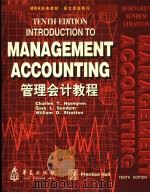
- 管理会计教程 英文版·第10版
- 1998 华夏出版社
-

- 基础会计原理 英文版 第14版
- 1998 沈阳:东北财经大学出版社;McGraw-Hill出版公司
-

- 会计学 英文版 第18版
- 1998 沈阳:东北财经大学出版社
-
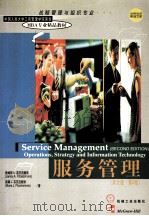
- 服务管理 英文版 第2版
- 北京:机械工业出版社
-

- 会计原理 第3版
- 1979 北京:中国铁道出版社
-
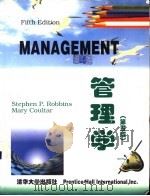
- 管理学 第5版英文版
- 1997 北京:清华大学出版社
-
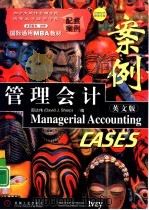
- 管理会计案例 英文版
- 1998 北京:机械工业出版社
-
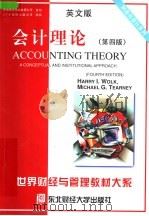
- 会计理论 英文版 第4版
- 1998 沈阳:东北财经大学出版社
-
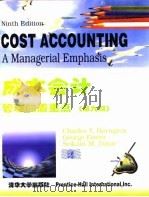
- 成本会计 管理的着重点 第9版 英文版
- 1997 北京:清华大学出版社
-

- 人体中的“石头”
- 1999 北京:科学出版社
-
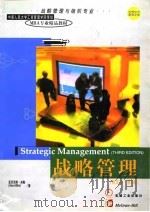
- 战略管理 英文版 第3版
- 1998 北京:机械工业出版社
-
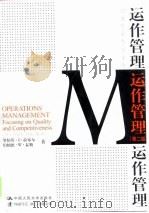
- 运作管理 英文版 第2版
- 1998 北京:中国人民大学出版社;Prentice Hall出版公司
-

- 管理会计 英文版 第8版
- 1998 沈阳:东北财经大学出版社;McGraw-Hill出版公司
提示:百度云已更名为百度网盘(百度盘),天翼云盘、微盘下载地址……暂未提供。➥ PDF文字可复制化或转WORD
